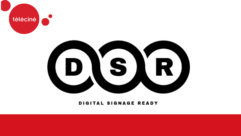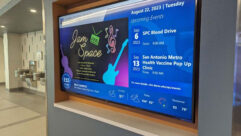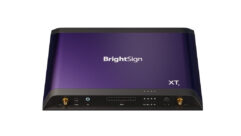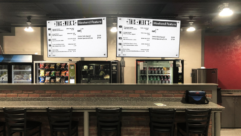

Digital Signage Is For Real
Recently I had the honor of judging entries for the 2009 Apex Awards, which will be handed out Feb. 25 at the Digital Signage Expo in Las Vegas. The Apex Awards recognize excellence in digital signage with a particular focus on two criteria: innovative use of technology and service to the customer (or consumer, as the case may be).
Brad Grimes
Credit: James Kegley
Recently I had the honor of judging entries for the 2009 Apex Awards, which will be handed out Feb. 25 at the Digital Signage Expo in Las Vegas. The Apex Awards recognize excellence in digital signage with a particular focus on two criteria: innovative use of technology and service to the customer (or consumer, as the case may be).
As I analyzed the many excellent entries, a couple things dawned on me that bear repeating.
This stuff’s going to be everywhere. We talk a lot about the massive potential of digital signage and about how cool the technology is. But I can’t tell you how many Apex entries explained digital signage adoption in simple terms of, “Client X wanted to replace paper signage.” Well couldn’t that be virtually everyone? If every company or store decided they were tired of hanging paper signs, digital signage projects would go through the roof–and there’s no reason to think hanging paper signs has become any more fun or efficient than it used to be.
Moreover, many entries detailed clients that had built a new store, or venue, or office, and required digital signage because it was the logical option. Why build something new and then employ old methods of communicating? As the nation comes out of its economic doldrums and commercial construction picks up, it’s safe to assume virtually every new building will be ripe for a digital signage pitch.
What’s new is sometimes old. As an editor it’s easy to grow complacent about the digital signage applications that come across my desk. But the fact is, integrators, designers, and other pros who work on signage projects have incorporated new technology so quickly that simple wayfinding, for instance, seems quaint next to applications in which sensors trigger targeted content or radio frequency identification tags beckon product-specific information.
The integration of digital signage with data and networking means more, better, and near-ubiquitous visual messaging. Think of signage on the sides of moving buses (see “What’s Next”). Meat-and-potatoes digital signage will of course dominate, but the integrator who looks into his technology toolbox and comes up with creative solutions will stand out from the rest.
Hype is hype, and sometimes magazines fan the flames. But this is the real. It’s everywhere. Today.
Brad Grimes – Editor
e-mail: [email protected]










